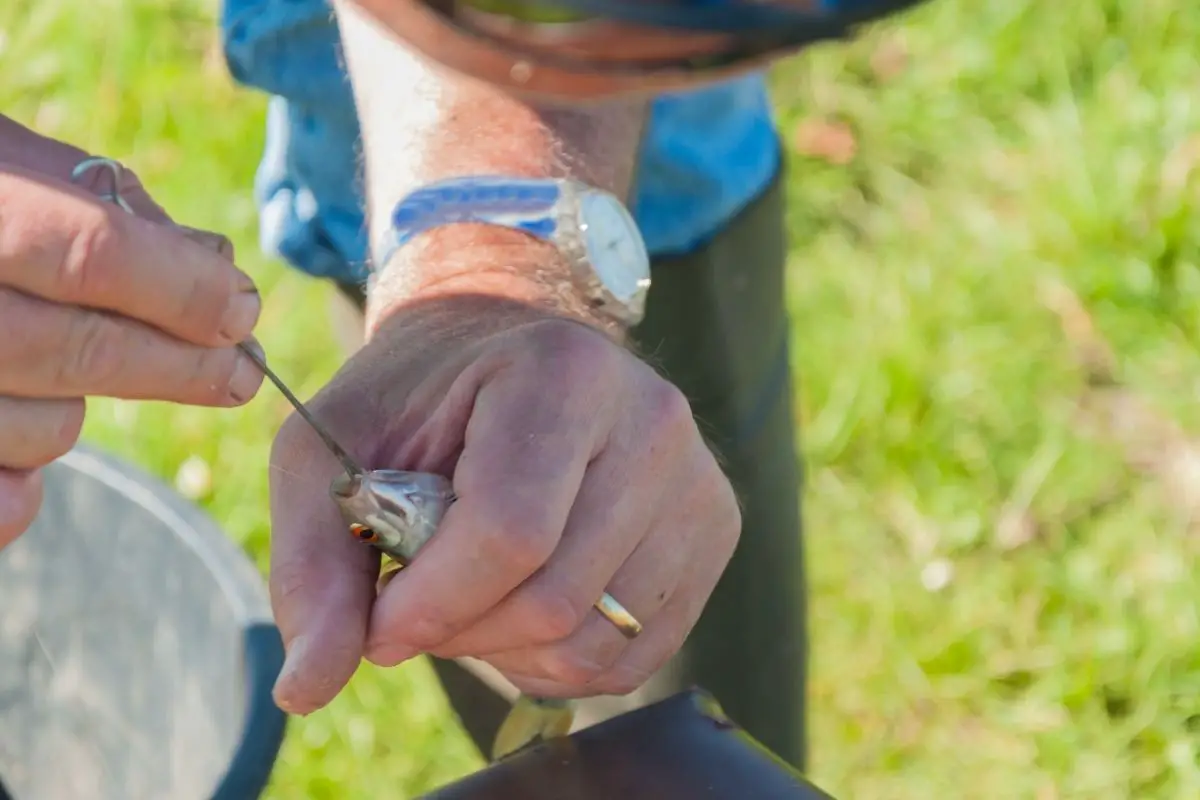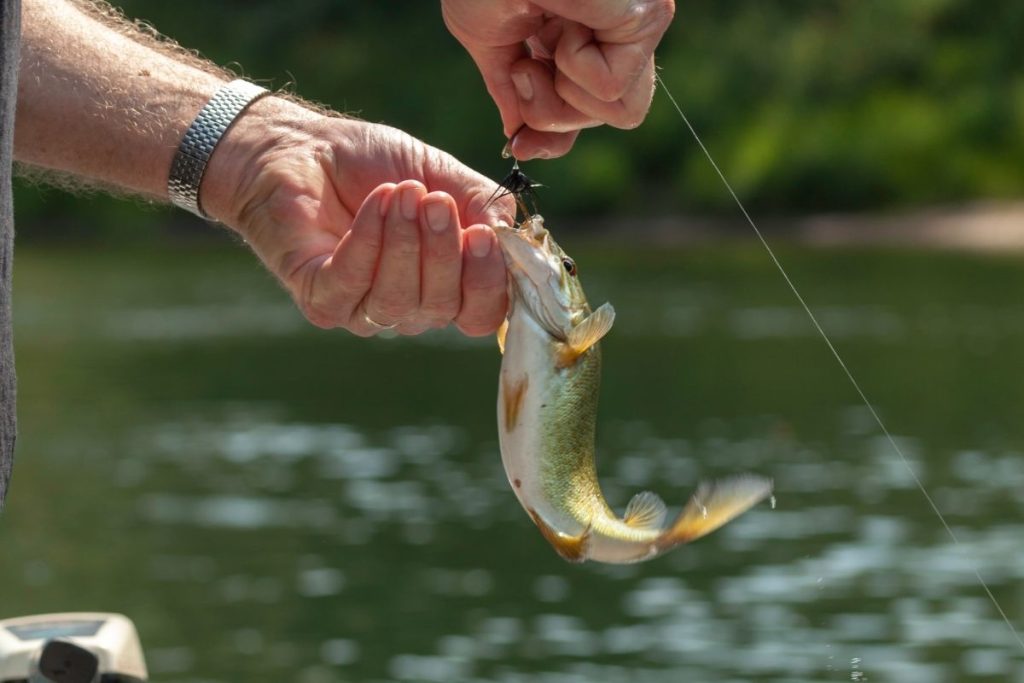The excitement that comes from reeling in a great catch remains totally unmatched by any other sport.
Knowing that your hard work, patience, and quick thinking helped you to make that prize catch makes it all very much worthwhile.
The only problem is after you’ve made your catch fish, you now have to decide what you are going to do with it.
Are you going to keep hold of the fish, maybe cook it? Or are you going to release it back into the waters?
Whichever option you choose, eventually you’re going to have to unhook the fish. But is there a certain way you should do it?
Is it actually more difficult than it looks? Are there other ways to catch fish safty without hooking them?
Let’s stop these questions from swimming about in your mind and tackle them head-on.
Learning to how to unhook a fish safely the right way takes some amount of work and knowledge, so make sure to pay attention.
Read on below to find out exactly how you can unhook a fish safely, humanely, and without damaging your prize catch.
How Do You Unhook A Fish?
While it may seem like a fairly simple process, you want to make sure that you remove a hook from a fish safty as carefully as you can.
This is because doing the procedure improperly could lead to heavy damage to the fish, which could kill it, which would be disastrous if you plan to send it back out.
The first thing you should do, after you’ve caught your fish, is to wet your hands slightly in the waters that you pulled the fish safly from.
This is so that your hands can be better prepared to use a precise grip, and so that the scales of the fish don’t stick to your hands when the fish dries, which could cause damage to the fish.
Grabbing fish with dry hands could cause damage to the fish.
Once you’ve reeled the fish in and wet your hands, you should make sure that you hold the fish firmly. The fish will squirm about, which could lead to you losing your grip and dropping it, which could kill fish of a certain size.
With one hand, wrap one finger under the chin of the fish, and your thumb over the head. The other hand should then be wrapped around the pectoral region of the fish to keep it still.
At this point, the fish safty may begin to tire and stop resisting. Now that the fish is relaxed, you can begin slowly easing the hook out from it.
Don’t simply pull the hook and tear the flesh safty of the fish. Twist the hook around until it can slide out carefully.
If you unhook a fish by hand, it is important to exercise the utmost care, so that you don’t end up sticking the hook into your hands or fingers.
Once the hook has been removed you can then do whatever you please with the fish.
How Quickly Should You Unhook A Fish?

Tyger Leader is reader-supported and may earn a commission when you book or purchase using our links. Learn more about our affiliate disclaimer here.
This is where some of the difficulty comes in how to unhook a fish safely.
Of course, you want to be able to remove the hook quickly enough if you want to keep the fish alive or throw it back into the water, but you also don’t want to rush it and damage either yourself or the fish.
You should aim to unhook the fish within two minutes, but make sure to remain calm and perform the process as carefully as you can every step of the way.
How Quickly Should You Reel In A Fish?
You should aim to reel in unhook a fish safty as quickly as possible. This may sound like rather a tall order, as some fish are able to put up far more of a fight than others, but it is important to do so.
The reason you should reel a fish in as quickly as possible is to reduce the risk of the fish becoming exhausted from resisting, which could cause it to die in the water.
This is incredibly unfortunate if you are planning to throw the fish safty back into the water after your catch, or if you want to keep it alive on your boat.
However, when attempting to reel in as quickly as possible, you also need to take account of how powerful your reel and your rod are, and how strong your fishing line is.
You don’t want to exert too much force on either piece of the equipment, as either one could break when too much force is exerted.
This is arguably what makes fishing such an exciting sport, the balance between careful preparation and sudden quick thinking.
How Do You Remove A Barbed Fish Hook?
Unfortunately, removing a barbed hook is a lot more difficult than removing a barbless hook.
Barbed hooks refer to hooks that have sharp points that help to keep a fish firmly hooked once it has bitten so that you don’t risk it coming loose from the hook while you attempt to reel it in.
However, though it is far more difficult, it is still possible to remove a barbed hook from a fish.
Just make sure to take extra care, as the barbs on such hooks can lead to pretty immense damage happening to the fish, which you definitely don’t want, regardless of whether you plan to keep it or throw it back.
If you are planning on throwing fish back into the water, it is best to avoid using a barbed hook, as it will require more time to unhook, and this is time in which the fish cannot breathe, which could lead to many dead fish!
The faster but more careful you are, the greater the survival rate.
Are There Other Ways To Catch Fish Without Hooking Them?
If you want another way to catch fish that doesn’t involve the potentially dangerous act of hooking them, you could instead try using nets.
There are all manner of nets that you can purchase that each operate slightly differently. Some are larger, some are smaller, while some are longer and some are shorter.
This is a great way to catch fish in a humane manner, ready to be thrown back in. However, you likely won’t be able to catch slightly larger or heavier fish with this method.
Other methods include simply using your bare hands if you have the strength and speed!
You could also try spearing fish, but this of course is not a valid method for anyone who plans to throw the fish back after they catch them.
To Conclude
Unhooking fish is a crucial step in the fishing experience. It doesn’t matter what you plan to do with the fish after catching it, that hook has to go!
If you want to release the fish back after catching it for sport, then you need to make sure that you remove it carefully, but quickly enough to ensure you do not cause harm.
There are all types of hooks that you can use in the sport, each of which has a different intended purpose.
However, if you plan to catch and release fish, you should aim to only use basic and non-barbed hooks, or use fishing nets or bare hands, as they will cause less harm to the fish than barbless hooks.
Frequently Asked Questions
Is Catch And Release Cruel?
Though the catch-and-release fishing method does not knowingly cause the death of fish, it can still inadvertently cause it.
This is because, during the struggle to escape a hook or a net, the fish may exert a massive amount of effort, which can tire them out until they die, or could cause lasting physical stress that slowly kills them, thus, catch and release significantly decreases the chances of survival.
This has led many to believe that catch and release is a cruel method that leads to a slow death.
What Happens If You Leave A Hook In A Fish?
Many modern fish hooks are actually made with very high carbon content. This is beneficial for fish who end up with hooks stuck in them. Such hooks will naturally dissolve in the seawater, which will cause them to disappear naturally.
Can Fishes Feel Pain?
Fish have Nociceptors, which are a neuron that communicates to the fish that they are in pain. So, yes, despite popular belief, fish can in fact feel a great deal of pain.



